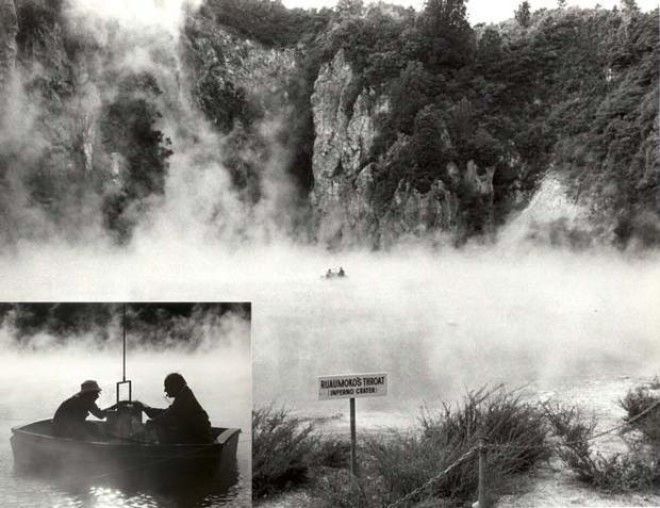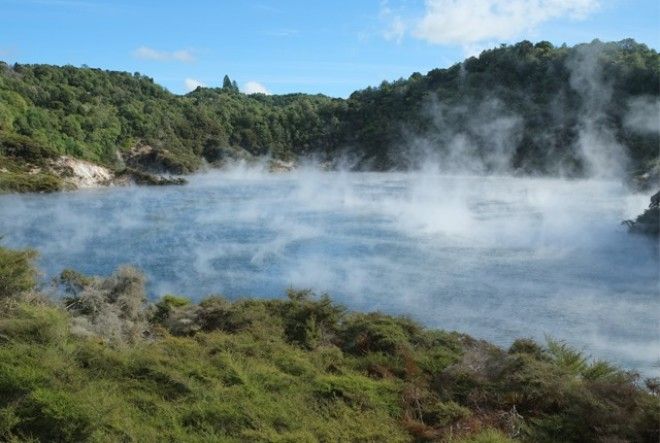The pool is relatively shallow, averaging a depth of only about 20 feet (maximum depth is around 65 feet). While not exactly a welcoming temperature for humans, Frying Pan Lake is home to thermophiles, organisms like bacteria that thrive in extreme temperatures—just one of the reasons they’ve been on Earth practically since life here began.
But that doesn’t mean humans haven’t ventured in. In the 1970s, Ron Keam from the University of Auckland did a thorough bathymetric survey of Frying Pan Lake, with a specially-designed wooden boat called Maji Moto.

Watch the steam of Frying Pan Lake snake off the surface below.

